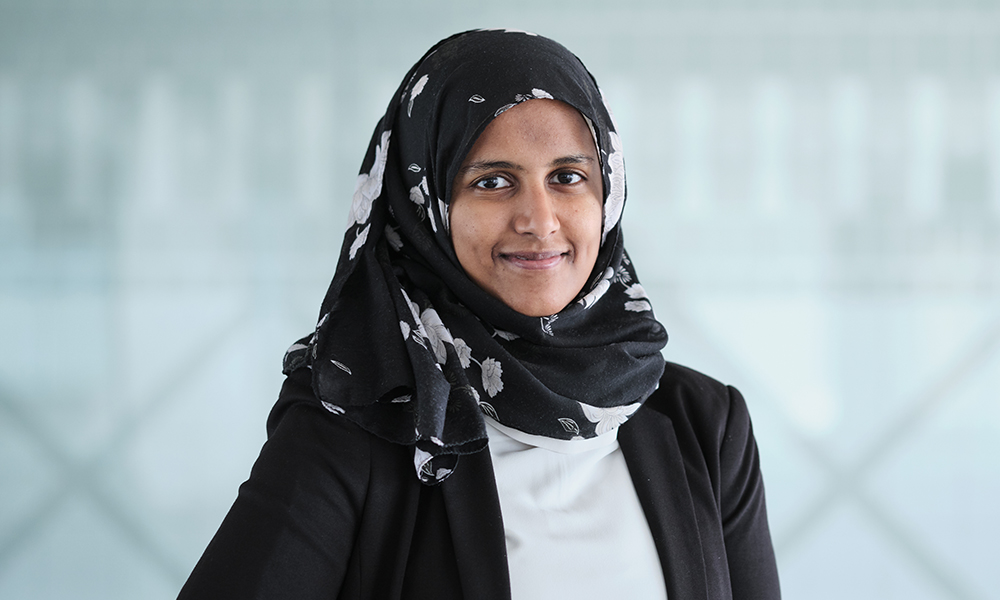As sustainability becomes a defining priority across industries, the UAE continues to strengthen its leadership in green building and design innovation. On the sidelines of regional sustainability discussions, ESG Mena spoke with Samar Hussein, Senior Architect and Design Resilience Regional Leader at Gensler. In this interview, she discusses the challenges and opportunities of sustainable design in the region, the role of partnerships, regulations, and the need for a cultural shift toward transparency and learning from experience.
The UAE has positioned itself as a leader in sustainability across many sectors — aviation, infrastructure, and hospitality. Yet, in design and construction, progress seems uneven. How do you assess the region’s position?
I think you’ve hit a very strong point that the Middle East is positioned in a very critical place globally when it comes to the topic of sustainability. The challenges that the market faces are actually multifold. You’ve got a very strongly growing, developer-led, fast-paced development sector. But to a certain extent, the industry doesn’t yet have the same depth of expertise and knowledge that exists in the US or Europe, because all of the development here happened over the last 50 years, while in Europe and the US it’s been more than 300 years. There is maturity there — and they started with massive mistakes. A lot of their building stock is now obsolete, but they’ve come to realize that they need to change course.
So what are the main gaps in the regional market today?
You’ve got developers that, to a certain extent, not all of them, are focused on capital costs and quick revenues. The building industry moves very fast, and some of those designing, constructing, and operating buildings do not understand the depth of the climate challenge. In fact, the building industry alone accounts for 39% of all carbon emissions.
And beyond carbon, the UAE faces environmental pressures like air quality and water scarcity. How do these affect your work?
In addition, we are one of the most water-scarce countries in the world. We have massive issues related to water consumption and availability. Air quality is another major concern that connects directly to how we plan and operate buildings and cities.
Given these challenges, how can developers — who are your clients — shift toward real sustainability while keeping projects commercially viable?
I think the key solution is the right partnership. You need a developer or client who is committed to the mission and understands that they must commit to a slightly higher upfront cost for long-term, high-value life cycle benefits. You also need a well-informed and educated design, engineering, and construction team that can translate that mission into feasible solutions. And finally, you need regulations that enable and incentivize this progress.
Are regulations the missing piece?
We interviewed multiple developers across the region, and one of the first things they said was: “If this becomes a law, I will change my process tomorrow.”
So many in the private sector still wait for government mandates. Is that an excuse?
Yes, it often is. They always blame the government, but the UAE — and the GCC in general — already applies the world’s best practices. It’s an open global business hub. You cannot impose sustainability with force; you must encourage and entice stakeholders to act.
How can governments strike that balance between encouragement and enforcement?
That’s what we call the stick and the carrot. There must be consequences for not doing the right thing — and incentives for those who are. But we must also recognize that building requirements in this region are highly prescriptive. The industry is used to detailed instructions on what exactly to do.
Do developers prefer strict code rather than flexibility?
Yes, they want consistency. If there’s ambiguity in requirements, they often take the easy way out — going for low-cost, quick-win solutions. But not all clients are the same. Some committed developers really understand the community, marketing, and long-term value of sustainability.
How do sustainable buildings contribute to well-being and ESG goals?
Sustainable buildings have been proven to deliver higher returns in rent and greater productivity, especially in office spaces. The benefits are extensive but long-term. My advice is: don’t try to do everything at once. Focus on key areas where you can make measurable impact — for example, energy performance or material efficiency. Then build on those achievements step by step.
You also mentioned client confidentiality as a barrier to showcasing regional projects. Why is this a challenge in the Middle East?
You brought up a very interesting point. One reason we often show examples from the US instead of the Middle East is that of strict NDAs and client confidentiality requirements here. Clients are very focused on maintaining their image. They want to ensure something is proven successful before publicizing it. So it’s not about avoiding risk; it’s about managing reputation. We have many projects in our Middle East portfolio that strongly advance sustainability, but they’re under NDAs that prevent us from sharing details.
How can the industry move past that culture of secrecy?
We need to be more open to mistakes. We should share lessons learned. If you try a renewable energy strategy that doesn’t deliver the expected return, that’s fine — share it. It helps others understand what works in this region’s unique climate. Developers often hesitate to be first movers for fear of failure, but those who take the lead can trigger a positive chain reaction.
Can you give an example of that ripple effect?
If a major developer decides to reduce embodied carbon, it creates pressure across the supply chain. Suppliers start improving transparency on materials because they don’t want to lose the opportunity to work with that developer. So one positive decision can transform the market.
Are you seeing more openness among clients now?
Yes, some clients are very progressive. For example, Aldar has a strong climate agenda and clear Net Zero targets across their Scope emissions. They’re now engaging suppliers to deliver sustainable materials such as low-carbon concrete. We’ve also worked with Majid Al Futtaim, who integrates sustainability into projects through both certification and performance-based goals.
We need to acknowledge those who are taking strong steps, give them credit, and stop treating mistakes as failures. The region is still young — 50 years ago, 90% of the current built environment didn’t exist. With 80% of residents being expatriates, there’s a mix of perspectives and learning curves. It’s okay to experiment and progress gradually. Even a 2% reduction in carbon emissions or 5% in water use is better than zero.
Air quality is a major issue for cities like Dubai. How can design improve it?
There are multiple fronts. It starts at the urban scale — mobility, orientation, and green coverage. We need to plan cities that allow natural ventilation, sequester carbon, and expand green areas. Within buildings, HVAC systems must be efficient because 90% of the time, people breathe air-conditioned air. The goal is to make indoor environments healthier while encouraging access to outdoor spaces.
Can traditional architecture help modern sustainability goals?
Absolutely. We should bring back some of the ancient wisdom of vernacular architecture — how our ancestors dealt with heat, air, and light long before modern systems existed. We’ve become too industrialized, relying on automation for everything, when sometimes traditional methods are the most sustainable solutions.




